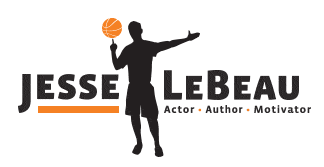Unlocking Your Potential: Mastering Critical Thinking Skills as a Teenager
Imagine this: You’re standing at a crossroads, with paths stretching out in every direction. Each path promises different adventures, risks, and rewards. How do you decide which way to go? This isn’t just about choosing paths in a forest; it’s about navigating the maze of life, especially during your teenage years. Hi, it’s Jesse here, and if there’s one thing I’ve learned on my own journey, it’s the incredible power of critical thinking.
Critical thinking is like having a superpower. It’s your ability to pause, reflect, and make decisions based on more than just a gut feeling. It’s about looking at the information you’re bombarded with every day – from social media, news, friends, and even family – and asking yourself, “Is this the whole story? Is there something more I need to know?” It’s about challenging the status quo, questioning assumptions, and, most importantly, discovering your own truth in a world full of noise.
In today’s world, critical thinking matters more than ever. We’re living in an age of information overload, where opinions are plentiful but facts can be scarce. Teenagers, like you, are at a pivotal moment in life. You’re forming your own views, making decisions that shape your future, and learning who you really want to be. Developing strong critical thinking skills now doesn’t just help you navigate the complexities of adolescence; it sets you up for a lifetime of making informed, confident decisions.
But let’s get real – mastering critical thinking isn’t about turning into a robot that analyzes every little detail before making a move. It’s about empowering you to cut through the clutter, to see beyond the surface, and to trust in your ability to choose wisely. It’s about building the confidence to stand by your decisions, even when the world seems to be pushing against you.
So, how do you develop these skills? How can you start to see the world through a more critical lens, ensuring that you’re not just following the crowd, but leading your own way? Well, that’s exactly what we’re diving into. From understanding the basics of critical thinking to applying it in your everyday life, I’m here to walk this path with you.
Together, we’ll explore why critical thinking is your best tool in today’s fast-paced world, break down the steps to strengthen these skills, and look at real-life examples of how a critical mindset can change the game. And trust me, once you start to embrace this mindset, there’s no telling how far you’ll go.
Ready to unlock your potential and master the art of critical thinking? Let’s get started. Because remember, the most incredible journey starts with a single step – and a curious, questioning mind.
Why Critical Thinking Matters More Than Ever
In a world where your social media feeds are flooded with information and your decisions can be influenced by a single tweet or post, critical thinking is your anchor. It’s what keeps you grounded in your beliefs, values, and knowledge, even as the world tries to sway you in a million different directions. Let me share why sharpening this skill is not just beneficial but crucial for you today.
Navigating the Information Overload
Every day, you’re bombarded with an avalanche of information. From news articles and blog posts to social media updates and video content, the digital age has made access to information easier than ever. But with this ease comes a challenge – the challenge of discerning fact from opinion, truth from misinformation. Critical thinking equips you to navigate this maze, helping you to identify what’s relevant, reliable, and real.
Making Informed Decisions
Whether it’s choosing which subjects to study, deciding who to spend time with, or even forming your opinions on global issues, the decisions you make today shape your tomorrow. Critical thinking ensures these decisions aren’t made in haste or based on peer pressure but are the result of careful, thoughtful analysis of the options before you. It’s about making choices that align with your goals, values, and the person you aspire to be.
Preparing for the Future
The world is changing at an unprecedented pace. Jobs that exist today might be obsolete tomorrow, and challenges we’ve never imagined are on the horizon. In such a world, the ability to think critically – to solve problems, adapt to new situations, and innovate – is more valuable than ever. It’s not just about academic success; it’s about preparing you for life in a rapidly evolving global landscape.
The Building Blocks of Critical Thinking
To start thinking critically, it’s essential to grasp the core components that make up this skill. Like any skill, from shooting hoops to creating art, critical thinking can be broken down into smaller, manageable pieces. Let’s explore the foundational elements that will help you develop a sharp, inquisitive mind.
Questioning Everything
The first step towards critical thinking is developing a healthy skepticism towards the information you come across. This doesn’t mean you distrust everything, but rather that you take a moment to question the source, the context, and the truthfulness of the information before accepting it as fact.
-
How to practice: Next time you read a news article or hear a piece of information from a friend, take a moment to ask yourself, “Who is saying this, and why? Is there evidence to support it? Could there be another side to this story?”
Identifying Biases
We all have biases, lenses through which we see the world based on our experiences, culture, and education. Recognizing these biases in ourselves and others is a crucial step in thinking critically. It allows us to question the completeness of the information we’re given and consider alternative viewpoints.
-
How to practice: Reflect on your beliefs and opinions. Can you identify where they come from? When consuming media, consider the possible biases of the source. How might these biases influence the way information is presented?
Seeking Out Diverse Perspectives
A critical thinker knows there’s value in diversity—diversity of thought, experience, and perspective. By exposing yourself to different viewpoints, you not only gain a broader understanding of the world but also learn to challenge your assumptions and beliefs.
-
How to practice: Actively seek out opinions and narratives different from your own. This could be through reading books, listening to podcasts, or engaging in conversations with people whose life experiences differ from yours.
Developing Critical Thinking Skills – Practical Tips
So, you’ve got a handle on the basics of critical thinking. You’re asking questions, recognizing biases, and seeking out different perspectives. Now, let’s take it to the next level. Here are some hands-on strategies to refine those skills and become a master of critical thought.
Challenge Your Assumptions
We all make assumptions – about people, situations, and the world at large. Sometimes, these assumptions are based on incomplete information or preconceived notions. Challenging these assumptions is a critical step in becoming a more thoughtful, open-minded individual.
-
How to practice: Next time you catch yourself making an assumption, pause and ask, “Why do I think this? What evidence do I have?” Try to prove yourself wrong, and in the process, you might just learn something new.
Engage in Thought-Provoking Conversations
One of the best ways to sharpen your critical thinking is by engaging in discussions that challenge your viewpoints. These conversations can open your eyes to new ideas and ways of thinking, helping you to refine your arguments and consider issues from multiple angles.
-
How to practice: Strike up conversations with friends, family, or even strangers online who hold different views. Approach these discussions with an open mind and a willingness to listen and learn, not just to win an argument.
Reflect on Your Decision-Making Process
Critical thinking is deeply tied to how we make decisions. By reflecting on your decision-making process, you can start to notice patterns in your thinking and identify areas for improvement.
-
How to practice: After making a decision, big or small, take some time to reflect on how you arrived at it. Consider the factors you weighed, the alternatives you considered, and whether your emotions played a role. Over time, this reflection can lead to more deliberate, thoughtful decision-making.
Critical Thinking in Action – Real-Life Examples
Critical thinking isn’t just theoretical; it’s a vital tool that comes into play in our daily lives. From evaluating media to solving everyday problems and navigating social situations, let’s dive into how you can apply critical thinking skills in practical, real-life scenarios.
Evaluating Media and News Sources
In today’s digital age, we’re constantly bombarded with information from various media outlets and social media platforms. Not all of it is reliable or accurate. Critical thinking allows you to separate fact from fiction.
-
Real-Life Scenario: You come across a sensational news headline on social media that immediately triggers an emotional response. Instead of accepting it at face value or immediately sharing it, you decide to investigate further. You check multiple sources, consider the credibility of each one, and look for evidence supporting the claims. This approach helps you form a more balanced and informed opinion.
Solving Everyday Problems
Every day, we face decisions and problems that require solutions. Critical thinking helps you approach these challenges systematically, breaking them down into smaller parts and considering various solutions.
-
Real-Life Scenario: You’re planning a group project, but there’s a conflict about which direction to take. Instead of going with the most popular opinion, you encourage the group to list the pros and cons of each option. By analyzing these together, the group makes a decision that’s well thought out, considering everyone’s input and the project’s objectives.
Navigating Social Situations
Social interactions can be complex, filled with unspoken rules and varying perspectives. Critical thinking skills can help you navigate these situations with empathy and understanding.
-
Real-Life Scenario: A friend has expressed an opinion that you strongly disagree with. Instead of immediately arguing or dismissing their viewpoint, you engage in a conversation to understand their perspective better. You ask open-ended questions and listen actively. This doesn’t mean you have to change your stance, but it helps you understand the reasoning behind different viewpoints and fosters a respectful dialogue.
Encouraging Critical Thinking in Your Circle
Critical thinking isn’t a solitary journey. It thrives in communities where questioning, exploring different perspectives, and open-minded discussions are encouraged. Here’s how you can become a catalyst for critical thinking among your friends, family, and community, creating a circle where everyone grows together.
Creating a Safe Space for Discussion
For critical thinking to flourish, people need to feel safe sharing their thoughts and questions without fear of judgment or ridicule.
-
Action Steps: Start by being open about your learning process and the questions you have. Encourage your friends and family to share their thoughts and questions too. When someone shares, listen actively and respond with empathy and respect. Make it known that it’s okay to disagree, and it’s okay not to have all the answers.
Encouraging Questioning and Curiosity Among Peers
The essence of critical thinking is in the questions we ask. Encourage those around you to be curious and to question the world around them.
-
Action Steps: Next time you’re discussing a topic with friends or family, challenge them (and yourself) to come up with questions about the topic. It could be anything from “Why is this the way it is?” to “What if it were different?” These questions open the door to deeper thinking and exploration.
The Role of Mentors and Coaches
Mentors and coaches play a pivotal role in developing critical thinking skills. They can guide, challenge, and support you in your journey.
-
Action Steps: Seek out mentors who embody the critical thinking skills you admire. Don’t be afraid to reach out to teachers, coaches, or even family members for guidance. Similarly, if you have the opportunity, mentor someone else. Sharing your journey and insights can help reinforce your learning and inspire others.
Conclusion: Embracing the Journey of Critical Thinking
We’ve navigated through the what, why, and how of critical thinking, uncovering its immense value in our lives and the lives of those around us. From understanding its importance in today’s information-rich world to exploring practical steps for sharpening this skill, our journey has been about more than just developing an ability. It’s been about fostering a mindset that embraces curiosity, challenges the status quo, and seeks out truth and understanding.
The Power of Critical Thinking
Remember, critical thinking is more than a tool for academic success; it’s a key to unlocking your potential in every aspect of life. It empowers you to make informed decisions, to navigate the complexities of the world with confidence, and to engage with others in meaningful, empathetic ways. It’s about seeing beyond the surface, questioning deeper, and finding your path to truth and understanding.
Your Role in a Larger Community
By nurturing these skills within yourself, you become a beacon of light for others. You create ripples that extend far beyond your immediate circle, contributing to a culture that values truth, respects diverse perspectives, and encourages open, thoughtful dialogue. You have the power to inspire change, to encourage others to question and think critically, and to create a community where everyone is empowered to grow and learn together.
A Call to Action
So, where do we go from here? The journey doesn’t end with the closing of this guide. It’s an ongoing adventure, one that requires practice, patience, and perseverance. Start small, question more, and embrace the continuous journey of learning and growth. And remember, you’re not alone in this. Reach out, share your experiences, and let’s continue to inspire and uplift each other.
-
Challenge yourself daily with new questions and problems to solve.
-
Engage with your community, encouraging open-minded discussions and sharing insights.
-
Seek out mentors and become one yourself, fostering a culture of curiosity and growth.








